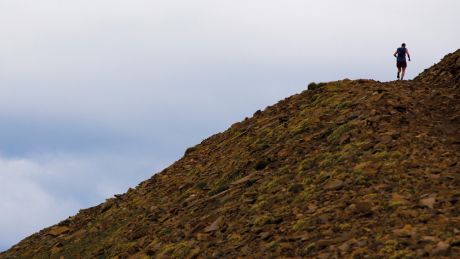How Dean Karnazes Learned To Run Like The Original Ultramarathon Man
Endurance lessons from the Ancients

The Ancient Greek messenger Pheidippides is known as the inspiration behind the marathon, having supposedly run 40km from Marathon to Athens in 490BC to carry news of Greece’s victory – but he also ran 220km from Marathon to Sparta in the space of two days before that, effectively inventing the modern ultradistance race too.
Ultrarunning legend Dean Karnazes, inspired by his own Greek heritage, attempted to emulate this hero of antiquity by covering the same journey without the tools available to modern runners like sports drinks and energy gels. Here’s what he learned from the experience.
1. Experience Counts
“Ultrarunning is not a young man’s game – it can take years to know your body well enough”
“As a trained professional and the chosen one to undertake a critical mission, Pheidippides was in a constant state of readiness and fully prepared to carry out his duties at any time,” says Karnazes. “It’s likely he was older than the average hemerodromos (‘day-long runner’), because it would have taken time to develop the navigational skills and physical experience, not to mention the diplomatic poise necessary to earn the Spartans’ trust. Even today, ultrarunning is not a young man’s game – it can take years to know your body well enough. I didn’t start seriously until I was in my 30s, and completed 50 marathons in 50 days at the age of 44.”
2. Train For The Right Body Shape
“High-impact weight-bearing exercise – including running – helps develop bone density”
“Excavations at Eleutherna, a mountainous region of Crete home to many trained-athlete militia, showed that the people who lived there had extremely strong lower legs,” says Karnazes. “From modern analysis we know high-impact weight-bearing exercise – including running – helps develop bone density, while running great distances over prolonged periods of time in uneven and challenging hilly terrain recruits many of the body’s major muscles in the legs, core, upper body and arms. Training in this way will get your the body of a hemerodromos with a high strength-to-weight ratio and a thick, sturdy skeletal structure.”
3. Build A Strong Mind
“Ultrarunners concentrate on the elation that will ensue as a result of accomplishing our goal”
“Having a strong body is only part of the equation,” says Karnazes. “Having a strong mind is equally, if not more, important. Pheidippides would have been under intense pressure, knowing every wasted step meant the Persians would be able to further fortify their position at Marathon. Thoughts of the Persian military laying their hands on his family could paralyse a man with anger – but such emotional discord would have been counterproductive to his mission He must have repressed such thoughts and remained focused. I’ve seen this in ultrarunners: rather than fixating on the consequences of failure, we concentrate on the elation that will ensue as a result of accomplishing our goal.”
4. Know What You’re Eating
“I held chewed pieces in my mouth to extract the salty residue, knowing it would help replenish my electrolytes”
“Ancient Greek athletes were known to eat figs, olives, dried meats and a concoction of ground sesame seeds mixed with honey, now called pasteli,” says Karnazes. “During my Spartathlon run cured meat was too rubbery and gristly, so I held chewed pieces in my mouth to extract some of the salty residue from the juices, knowing the sodium would help replenish my electrolytes. The once delectable pasteli now tasted like maple syrup mixed with talcum powder, chalky and repulsively sweet, while figs were terrific on the way in but dangerous on the way out, if you catch my drift. The lesson? Always make sure you’ve thoroughly road-tested your in-race nutrition.”
The Road To Sparta: Running In The Footsteps Of The Original Ultramarathon Man by Dean Karnazes is out now, RRP £12.99 (Allen & Unwin UK)
Sign up for workout ideas, training advice, reviews of the latest gear and more.
Coach is a health and fitness title. This byline is used for posting sponsored content, book extracts and the like. It is also used as a placeholder for articles published a long time ago when the original author is unclear. You can find out more about this publication and find the contact details of the editorial team on the About Us page.

